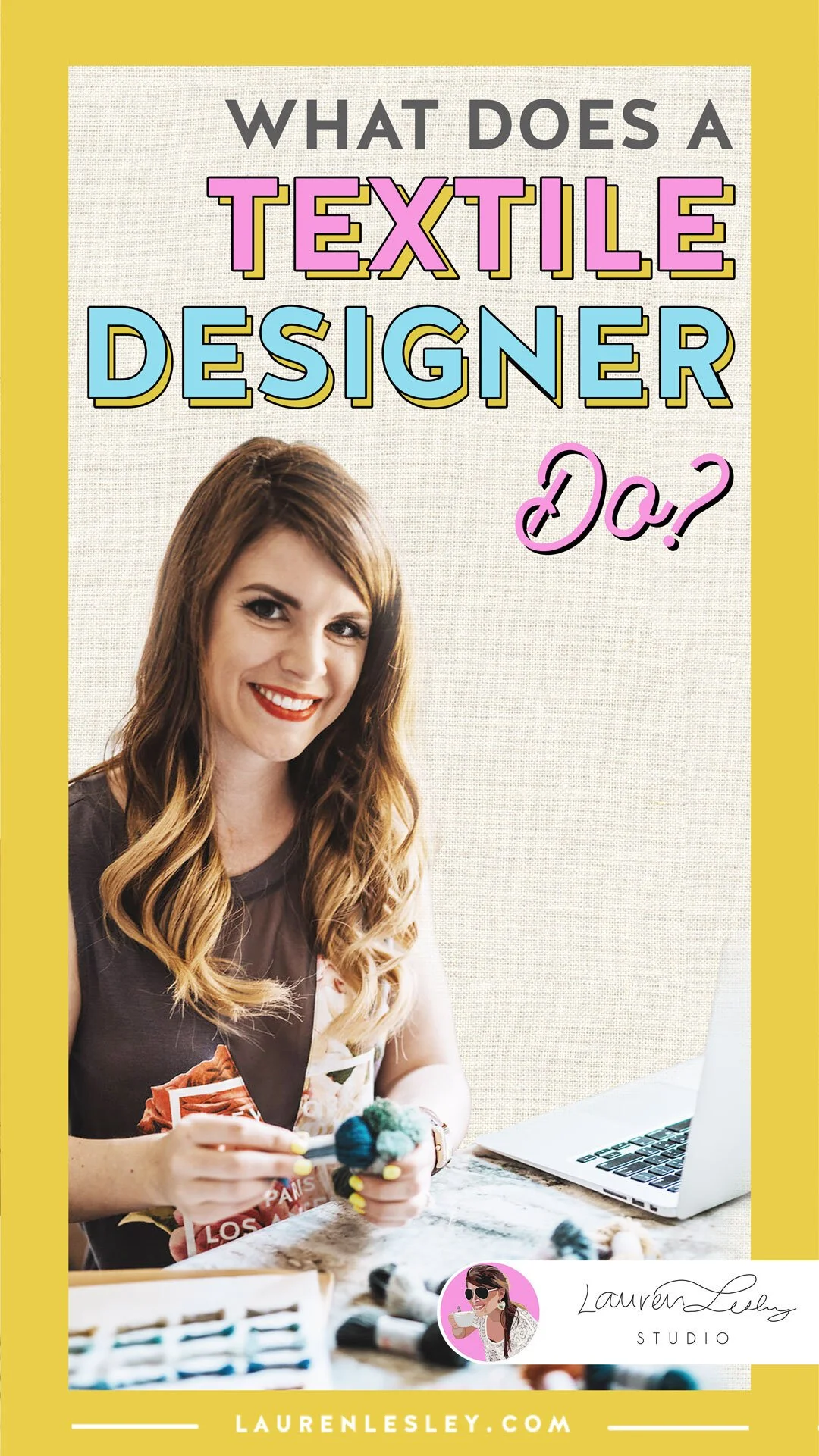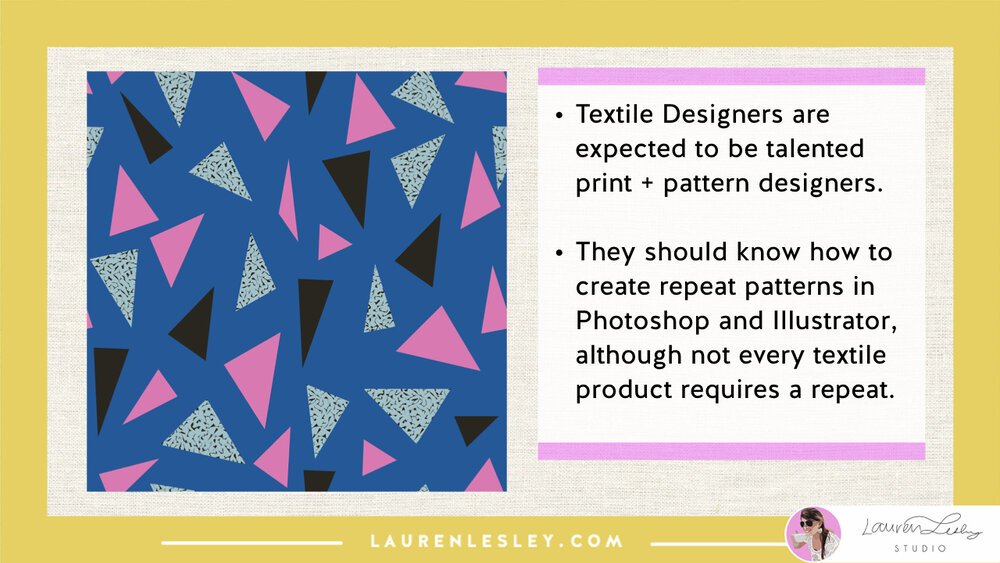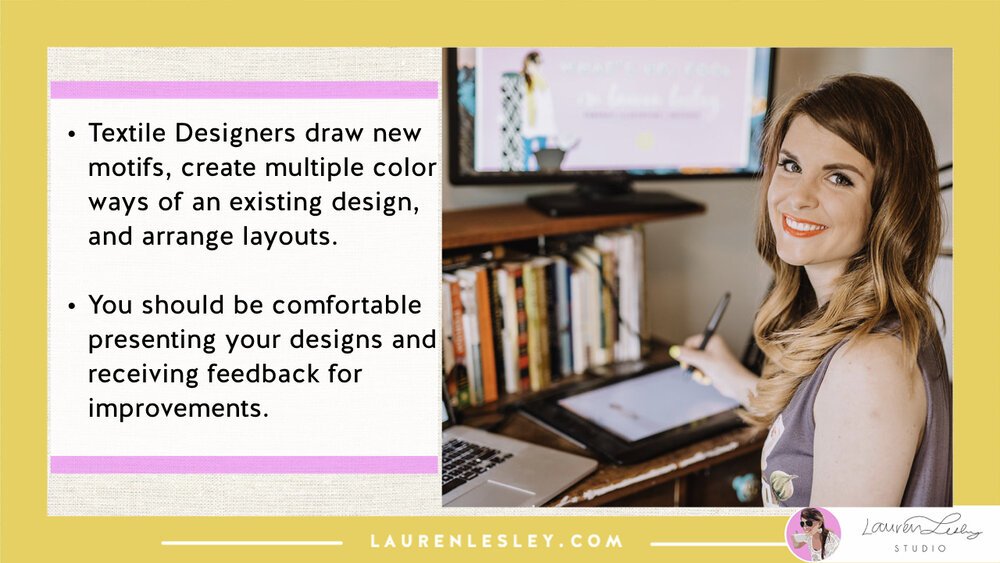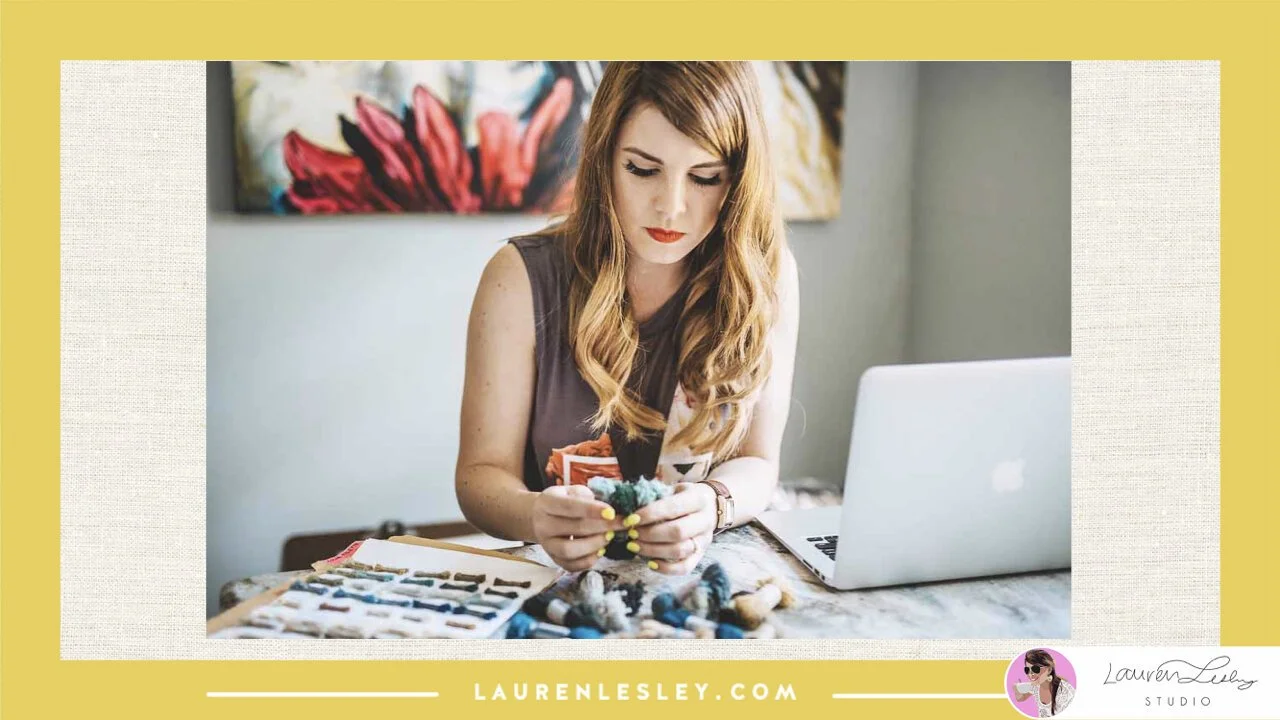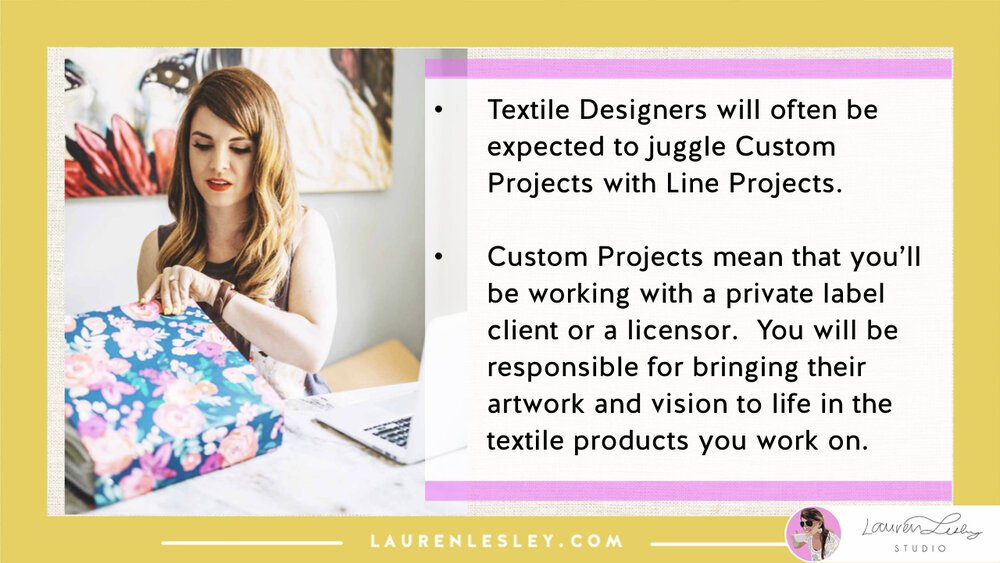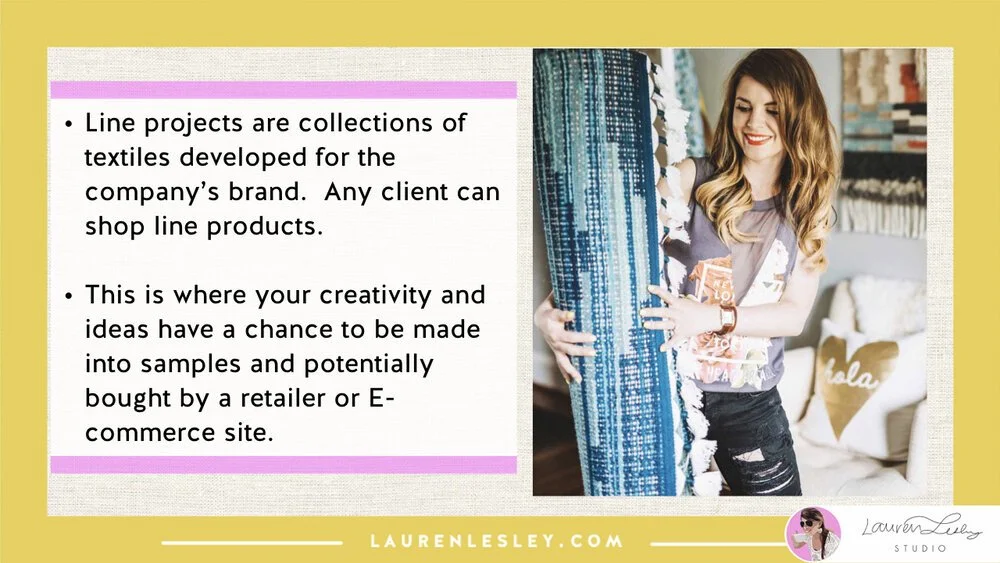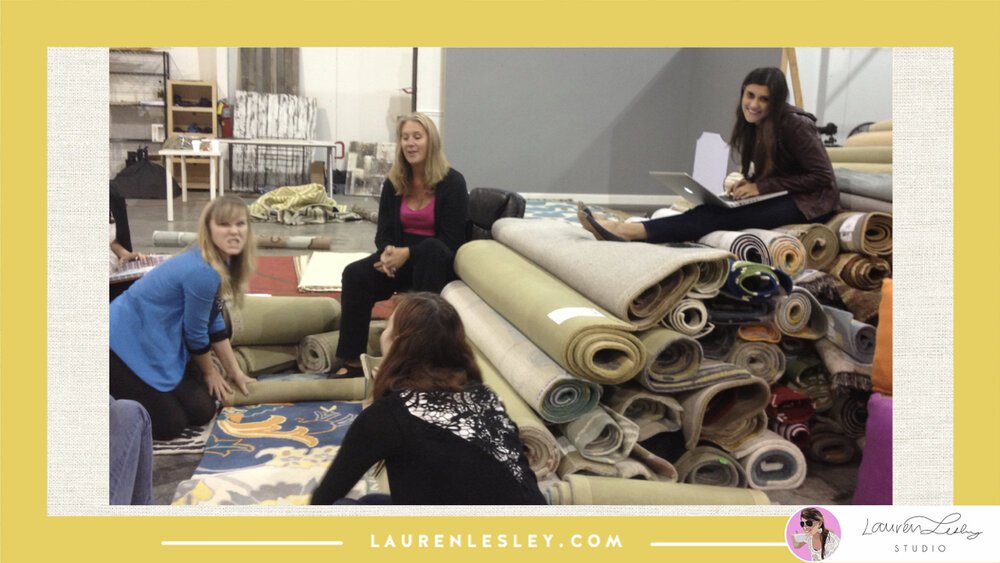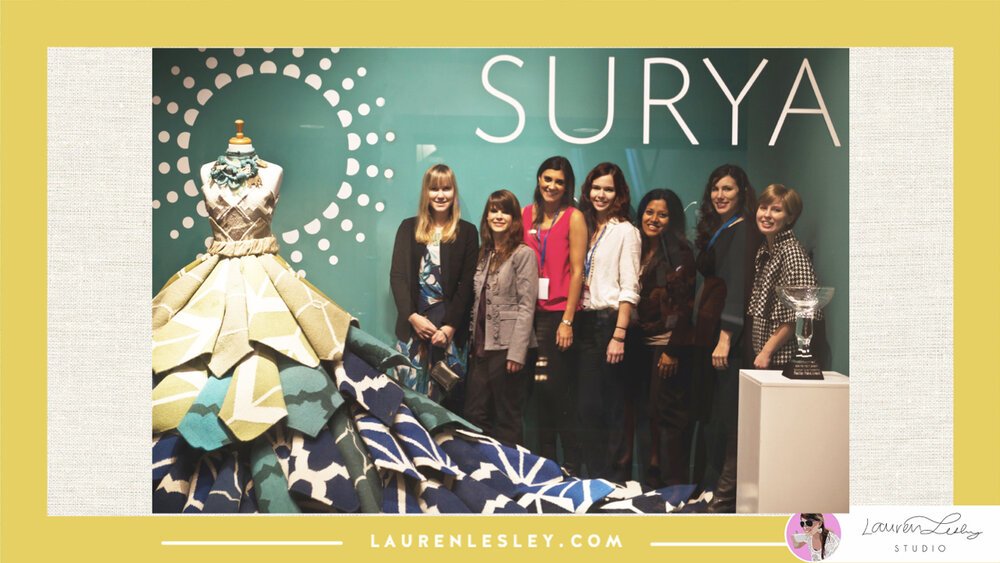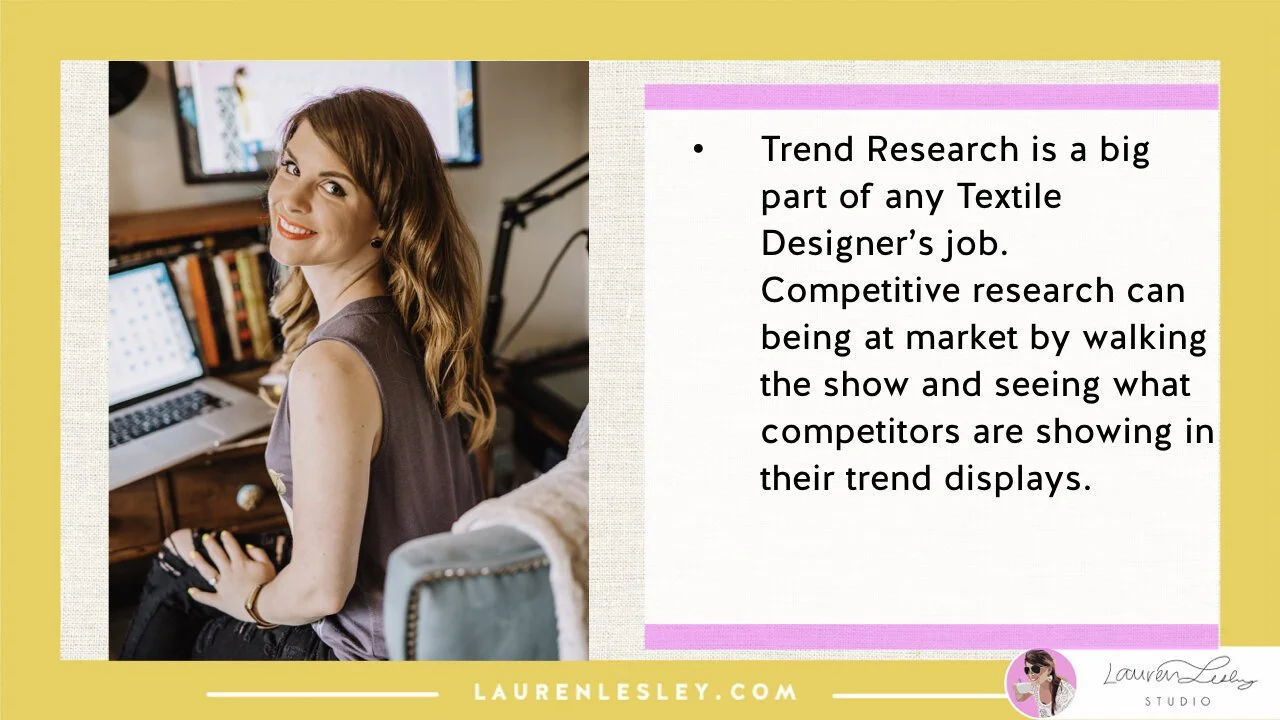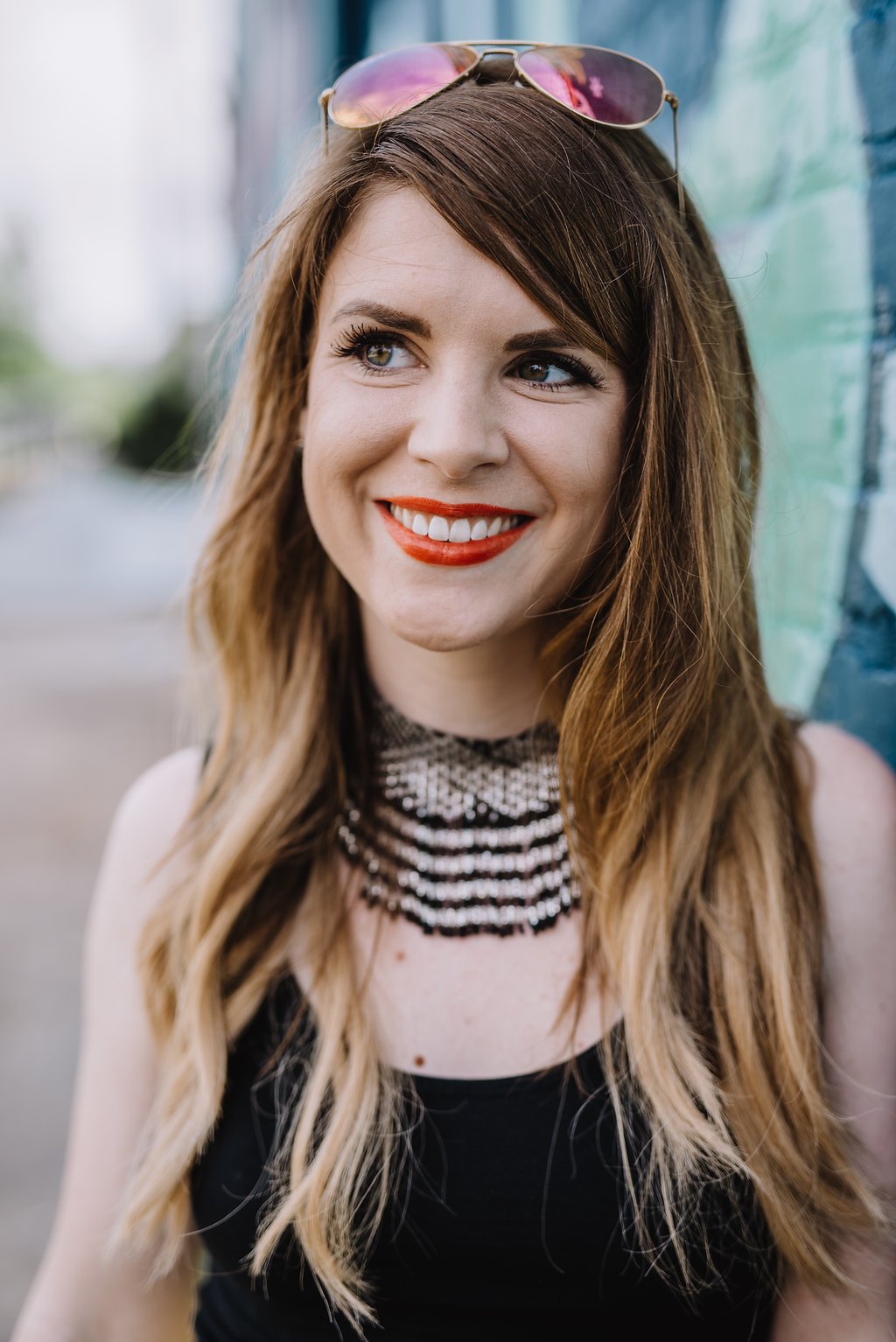What Does a Textile Designer Do? 6 Key Responsibilities
What Does a Textile Designer Do?
Here are the 6 key responsibilities!
Have you ever wondered what exactly does a fashion designer do? Or perhaps, what does a textile designer do?
There’s so much that goes into being a successful textile designer, whether you’re just starting out or have been in the game for a long time.
WHAT DOES A TEXTILE DESIGNER DO?
I've been a textile designer for over 10 years and have been lucky and grateful enough to have textiles sold by Anthropologie, Target, etc. Some of my designs have also received over 20,000 likes on West Elm on Instagram. Pretty cool, huh!
Below, I'm going to explain what exactly does a textile designer actually do? I'll go into more detail about the 6 key job responsibilities of a textile designer.
WATCH MY YOUTUBE VIDEO
WHAT DOES A TEXTILE DESIGNER DO?
OR READ THE BLOG POST BELOW
RESPONSIBILITY #1 | PRINT & PATTERN
Textile designers are expected to be talented print and pattern designers. They should know how to create repeats in Photoshop and Illustrator. Although not every textile product requires a repeat, it's still something you should know how to do just in case it comes up or if there's a new product that you need to design a repeat for.
Textile designers draw new motifs, create multiple color ways of existing designs, and arrange layouts in the CAD (aka computer-aided design) to come up with the best composition for that product. As a textile designer, you should be comfortable presenting your designs and receiving feedback for improvements.
RESPONSIBILITY #2 | COLOR PALETTES
Pantone is the universal color language for ALL designers, and they all have different color systems for different material applications.
For example, textile designers typically use Pantone chips in paper, cotton, or polyester. But, a graphic designer may just use the standard PMS (Pantone Matching System) colors.
Oftentimes, the factory will dye custom fibers to the Pantone chips that you selected for your palette. It takes a lot of time and energy for the factory to custom dye yarn and fibers. That’s why it's better to work with a limited color palette of about 20 to 30 colors at the most. This way the factory can bulk dye the yarn and it won't go to waste because they know that you're going to be sticking to the chosen range of colors. Afterwards, they’ll send you yarn palms to work with as you're designing your collection of textiles.
Sometimes, the paper chips in Pantone are not comparable to fabric. That’s why the factory will send you yarn palms in the material that you're actually requesting. Wool tends to dull down colors quite a bit, whereas something like silk may make the colors more vibrant or viscose.
RESPONSIBILITY #3 | PRODUCT DEVELOPMENT
On top of color and design, textile designers are sometimes expected to bring their construction and fiber knowledge into play.
When you're designing the product that you're working on, can you apply a different type of weave to your product or can you add fringe or tassels and give it a little jazz? Is it possible to create a high low effect or add some texture?
Sometimes, companies will have separate departments for design and product development, but in my experience as a textile designer, it's always been more of a combined role.
RESPONSIBILITY #4 | CUSTOM VS. LINE PROJECTS
As a textile designer, you will often be expected to juggle custom projects with line projects.
Custom projects mean that you'll be working with either a private label client such as a retailer like Pottery Barn or The Gap. A custom project could also mean that you're working with a licensor, someone like Orla Kiely or a very well-known design brand. Ultimately, you will be responsible for bringing their artwork and vision to life in the textile products that you specifically work on.
Line projects, on the other hand, are collections of textiles developed for the company's brand. Any client can shop line products which basically means that you're creating a collection of products to bring into the market. At that point, any buyer or any customer can shop your main line of products and order whichever products they like, and it then becomes exclusive to them.
It’s at this point that your creativity and ideas have a chance to be made into samples and potentially bought by a retailer or even an eCommerce site. Sometimes they're exclusive, sometimes they're not. It will really depend on the company.
An eCommerce site such as Wayfair for example, is not going to have exclusivity to a line product. But, if it was a retailer like Pottery Barn, they probably would.
RESPONSIBILITY #5 | MARKET WEEK
Textile designers are typically heavily involved in both setup and the actual market, which means you could be spending a week or more away from home just for this purpose. Set up involves styling display areas and arranging products around the showroom for a beautiful presentation.
Check out the photos below to see what I mean by this.
During the actual market, textile designers may be expected to interact with customers and assist sales reps with product information and explaining design and technical details.
Sales reps are really great at understanding the pricing, the minimum order quantity (MOQ), and the sales side of the product. However, when a buyer comes to the market, they want to know the full picture. So, it's great for a textile designer to act as the wing man for the sales rep and explain all of the design and product information.
A sales rep will learn about the product information regardless, but if it’s a brand new product and they don’t have the history of working on it, you’ll be the one to really go into detail explaining all there is to know about the product.
RESPONSIBILITY #6 | TREND RESEARCH
Trend research is a big part of any textile designers’ job. Competitive research can involve starting at the market and seeing what competitors are showing in their trend displays.
Further trend research is done online by pouring over sites like Pinterest, design blogs, and trend websites like WGSN.
Trend shopping involves compiling a list of high trend boutiques and stores to visit, from which you can get a good idea of what's new in the marketplace. You can also go around to different boutiques in your town that are high up in trend and snap some photos with your cell phone.
Snapping photos with your cell phone doesn’t necessarily mean you’re trying to copy anything. It simply means you’re trying to get a general idea of what color palettes and design styles are really hot and selling in the marketplace.
Chances are, your employer may also even send you to trend shows like Maison&Objet in Paris to be ahead of the curve for trend analysis.
IN SUMMARY…
As you can tell, a textile designer has a number of responsibilities ranging from being an expert with colors and patterns to knowing how to market your products and designs and research trends.
Above, I’ve outlined the 6 key responsibilities of any fashion or textile designer. You too can one day be featured in stores like Anthropologie or Target or fly out to Paris and do your own trends analysis research. Be sure to also check out my other blogpost, Textile Design Jobs, to see what kinds of opportunities you can get from being a textile designer and how you can apply these 6 key responsibilities in the real world!
SKETCHBOOKING YOUR STYLE
By the way, if you’re wanting to get in the Surface Pattern Design / Illustration game, but you are really struggling to develop your own art style, be sure to check out my free workshop.
It includes how to create a system for creating your own, unique Art Style.
Sign up below!

